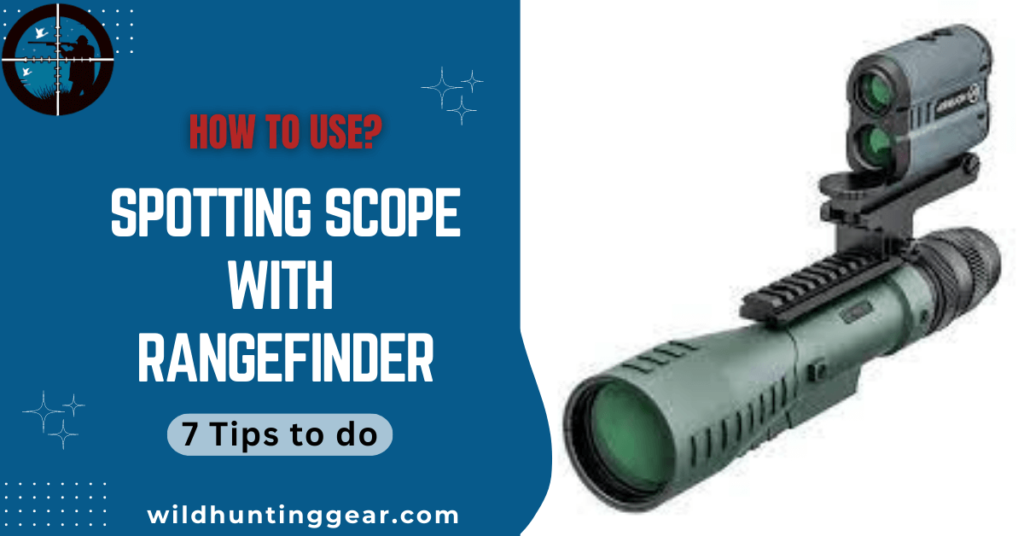Spotting scopes and rangefinders are essential pieces of equipment for any hunter. Spotting scopes allow you to find and monitor your target from a distance, while rangefinders provide vital information such as the exact distance between you and your target. But how to use a spotting scope with a rangefinder.
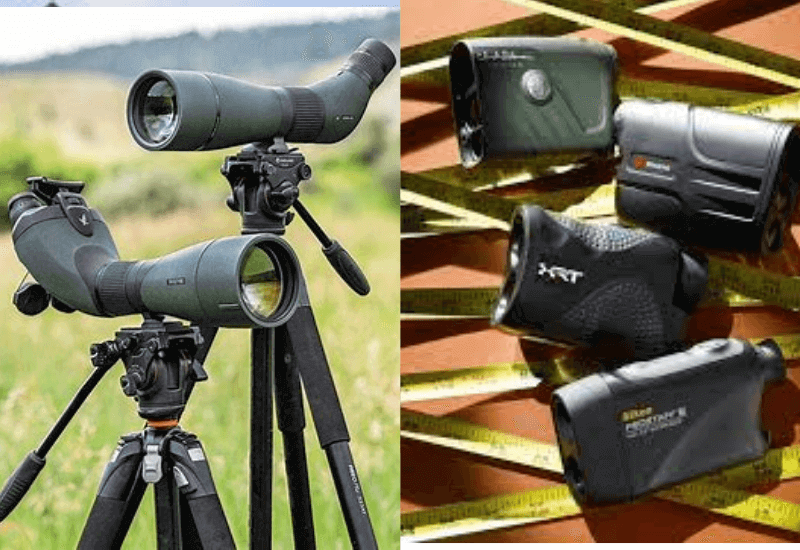
In this article, we will go over the basics of using a spotting scope and rangefinder together. We’ll also provide some useful tips to get the best results when using a spotting scope with a rangefinder.
By the end of this guide, you’ll have the knowledge you need to take your outdoor activities to the next level. So stay tuned!
How to Use a Spotting Scope with Rangefinder?
Using a spotting scope with a rangefinder can be a valuable tool for various outdoor activities such as hunting, birdwatching, wildlife observation and long-distance target shooting.
The combination of a spotting scope and a rangefinder allows you to accurately determine the distance to your target while also providing detailed magnified views.
Here’s a step-by-step guide on how to use a spotting scope with a rangefinder:
1) Familiarise yourself with the equipment
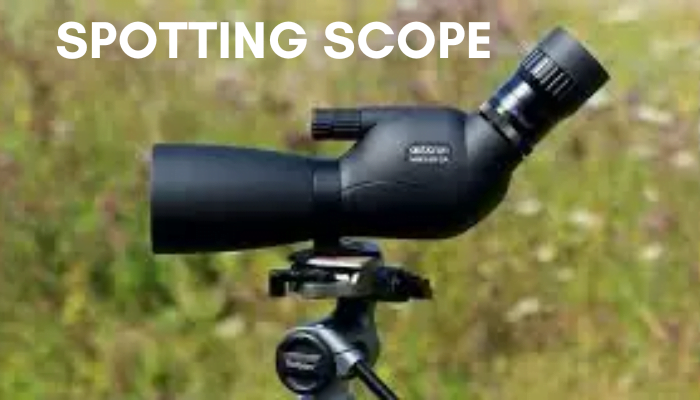
- Spotting Scope: A spotting scope is a portable telescope designed for terrestrial viewing. It typically has higher magnification and better image quality compared to binoculars.
- Rangefinder: A rangefinder is a device that measures the distance from the user to a target by emitting a laser beam and measuring the time it takes for the beam to reflect.
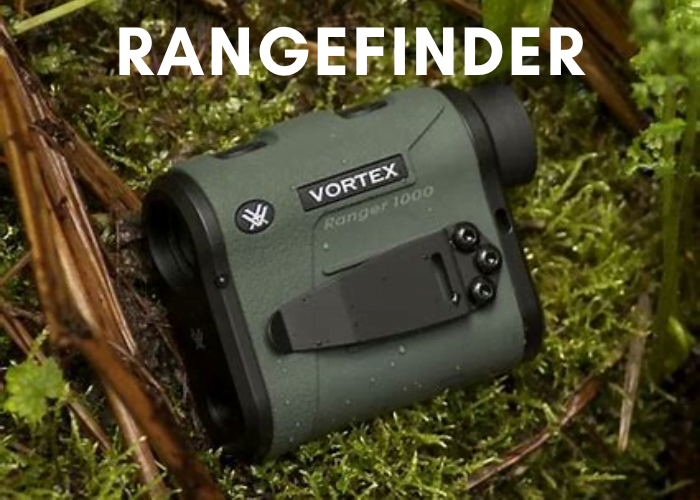
2) Set up your spotting scope
- Choose a stable location: Find a solid surface or use a tripod to mount your spotting scope. This will help minimize vibrations and ensure a steady view.
- Attach the eyepiece: Connect the appropriate eyepiece to the spotting scope. The eyepiece determines the magnification level and can be easily interchanged based on your needs.
3) Calibrate the rangefinder
- Follow the manufacturer’s instructions to calibrate the rangefinder properly. This may involve adjusting settings, selecting the correct mode (yards or meters) or zeroing the device if necessary.
4) Focus and observe
- Adjust the focus: Use the focus knob on the spotting scope to achieve a clear image of the target. Start with the coarse focus adjustment, then fine-tune it to obtain a sharp view.
- Observe the target: Look through the spotting scope and locate your target. Take your time to scan the area and identify any specific objects or features you want to measure the distance to.
5) Measure the distance
- Aim the rangefinder: While looking through the spotting scope, align the rangefinder’s reticle with the desired target.
- Activate the rangefinder: Press the appropriate button on the rangefinder to activate the laser beam. Ensure that the rangefinder has a clear line of sight to the target without any obstructions.
- Wait for the measurement: The rangefinder will emit a laser beam towards the target, which will bounce back and be detected by the device. The rangefinder will then calculate and display the distance to the target on its screen.
6) Make adjustments
- Use the distance information: Once you have the distance reading from the rangefinder, you can make necessary adjustments to your aim, settings or shooting calculations based on the activity you’re engaged in.
- Refocus if needed: If you make any changes to your aim or the target distance is significantly different, refocus the spotting scope to ensure a clear view.
Remember to practice safe and responsible use of your equipment, especially when using a rangefinder in activities like hunting, where laws and regulations may apply. Always adhere to local laws and guidelines and be considerate of the environment and others around you.
Tips for effective use of spotting scopes with rangefinder
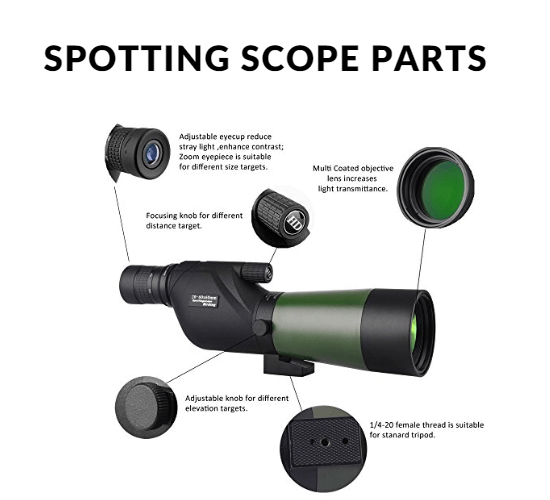
Here are some tips to help you get the most from your rangefinder and spotting scope when hunting.
- Use a tripod: A stable, vibration-free mount is essential for accurate measurements. If you use a handheld rangefinder, try to rest it on a solid surface or use an extendable monopod for more stability.
- Choose the right eyepiece: Select the appropriate magnification when attaching an eyepiece to your spotting scope. Different activities require different levels of magnification and image clarity, so make sure you use the right eyepiece for the job.
- Use proper lighting conditions: Bright, well-lit conditions are ideal for rangefinding. Adequate lighting helps the rangefinder to accurately detect the target and provide precise distance measurements.
- Aim for reflective targets: Rangefinders work best on reflective targets such as buildings, road signs or highly visible objects. These targets provide a stronger return signal, resulting in more accurate distance readings.
- Minimize obstructions: Avoid obstacles that may interfere with the rangefinder’s line of sight. Objects like tree branches or tall grass can disrupt the measurement process, so try to find a clear line of sight to the target.
- Wear protective eye gear: Always wear safety glasses when using a rangefinder to protect your eyes from the laser beam emitted from the device.
- Practice makes perfect: Rangefinders take a bit of practice to get used to, so take some time to familiarize yourself with the device. You can do this by aiming it at various objects around you and taking note of the measurements displayed.
By following these tips, you can make the most of your spotting scope and rangefinder during hunting activities. With some practice and dedication, you’ll be able to accurately measure distances with ease!
Maintenance and care of spotting scope with rangefinder
Rangefinders and spotting scopes require regular maintenance and care to stay in top-notch working order.
Here are some tips for keeping your rangefinder and scope in peak condition:
- Clean the lenses:
Use a soft cloth to gently wipe away any dust or debris from the lenses of both the rangefinder and scope. If there are any smudges, use a lens-cleaning solution to remove them.
- Store in a safe place:
Keep your rangefinder and scope in a cool and dry place away from direct sunlight or heat sources. This will help protect them from moisture, dust and other elements.
- Avoid rough handling:
Handle the spotting scope with care, especially when attaching or detaching it from the tripod. Avoid dropping or banging the scope against hard surfaces, as this can misalign the internal optics or cause other damage.
- Check for damage:
Regularly inspect all parts of the rangefinder and scope. Make sure the eyepiece is securely attached, all buttons are functioning correctly and there are no signs of wear or tear.
- Take precautions when transporting:
When you’re traveling with your rangefinder and scope, make sure to transport them in a secure case that will protect them from impacts or rough handling during transit.
Following these maintenance and care tips, you can keep your spotting scope and rangefinder in great condition for many years. With proper use and regular upkeep, you’ll be able to enjoy a reliable experience when hunting with a spotting scope and rangefinder.
Troubleshooting common issues when using a spotting scope with a rangefinder
Rangefinders and spotting scopes are complex pieces of equipment, so it’s not uncommon to experience technical issues from time to time.
Here are some common problems you may encounter while using your rangefinder and spotting scope:
- Unclear Image: If the image in the scope is blurry or out of focus, try adjusting the eyepiece and refocusing the scope. If this doesn’t work, check for any obstructions in the line of sight or make sure you’re using the appropriate magnification level for your purpose.
- Incorrect Readings: If the rangefinder isn’t displaying accurate readings, try to ensure that it has a clear line of sight to the target without any obstructions. If this doesn’t work, check that the batteries are in good condition and replace them if necessary.
- Malfunctioning Buttons: If any of the buttons on your rangefinder are sticking or not working correctly, you may need to clean out the device with compressed air. Make sure to unplug the device and take all necessary safety precautions before attempting this.
By troubleshooting these common issues, you should be able to get your rangefinder and scope up and running in no time. If the problem persists, reach out to the manufacturer for technical support.
Final Words:
By using a spotting scope with a rangefinder into your outdoors can significantly improve your observational and targeting capabilities. By following the steps outlined in this guide, you can effectively utilize this powerful tool to its full potential.
Remember to choose a high-quality spotting scope with a rangefinder, familiarize yourself with its features and adjustments, practice proper setup and alignment techniques and master the art of ranging distant objects accurately.
Whether you are a hunter, birdwatcher or nature enthusiast, a spotting scope with a rangefinder can provide you with an invaluable advantage, enabling you to experience the beauty of the outdoors with precision. So go ahead, explore the wilderness and appreciate the incredible world around you.
